- Home
- Susan Hill
Howards End is on the Landing Page 2
Howards End is on the Landing Read online
Page 2
A good title beckons, attracts, seduces, remains. I have plenty of favourite titles though oddly enough they are not necessarily attached to favourite books. A good title makes a pattern, has a rhythm and can be rolled very satisfactorily round in the mouth, even recited like a verse to cheer up dull moments.
The Heart is a Lonely Hunter
The Ballad of the Sad Café
The Tenant of Wildfell Hall
Salmon Fishing in the Yemen
Tinker, Tailor, Soldier, Spy
The Mysterious Affair at Styles
A Woman’s Guide to Adultery
All Fun and Games until Somebody Loses an Eye
The Curious Incident of the Dog in the Night-Time
Agatha Raisin and the Quiche of Death
We Need to Talk About Kevin
If on a Winter’s Night a Traveller …
Flaubert’s Parrot
The Man with the Golden Gun
The Scarlet Letter
The Hound of the Baskervilles
The Prime of Miss Jean Brodie
The Earth Hums in B Flat
They all have a certain ring. They make you want to read the book.
I could have begun my year of reading from home anywhere in the house, anywhere on the shelves. I had no agenda to follow, no lists to tick off, no syllabus or plan to follow.
I began more or less at random by taking down a box of books that was sitting next to the Malone Society Classics in the SDD.
In 1985 Penguin celebrated their fiftieth year by publishing a set of their first ten titles from 1935 in a handsome box. I had two sets, one of which I have left on the shelf untouched and still muffled in its original shrink-wrap. These things are sometimes worth keeping.
I am cynical about anniversaries. Publishers, like the BBC, make a fuss about the tenth or the twenty-fifth or the centenary since they started imprint X or first published author Y or bound in the colour Z but it’s often just a pretext for a self-congratulatory party and some re-jacketing – the general public isn’t much interested. But I was very aware of the Penguin 1935–85 set because it was issued the year my third daughter was born and my husband gave me one as a present, for reading-while-feeding. I associate the books with sitting up in the middle of the night quietly reading Mary Webb’s Gone to Earth and Compton Mackenzie’s Carnival by the soft light of the nursery lamp. (The other titles in the set are André Maurois’ Ariel, Hemingway’s A Farewell to Arms, Eric Link-later’s Poet’s Pub, William by E.H. Young and Agatha Christie’s The Mysterious Affair at Styles.)
Now, on a golden day in late September, I took two books out to a deckchair in the garden. The first apples were thumping down. The last swallows were dipping and soaring, dipping and soaring over the pond. A dragonfly hovered, its electric-blue back catching the sunlight. There had been an early mist and cobwebs draped over the long grass like parasols caught and held on their four corners. The air smelled of damp earth.
I opened the first slim paperback, a perfect facsimile with its green jacket and old-fashioned print.
The Unpleasantness at the Bellona Club by Dorothy L. Sayers.
‘What in the world, Wimsey, are you doing in this Morgue?’ demanded Captain Fentiman, flinging aside the Evening Banner with the air of a man released from an irksome duty.
‘Oh, I wouldn’t call it that,’ retorted Wimsey amiably. ‘Funeral Parlour at the very least. Look at the marble. Look at the furnishings. Look at the palms and the chaste bronze nude in the corner.’
‘Yes, and look at the corpses. Place always reminds me of that old thing in Punch, you know “Waiter, take away Lord Whatsisname, he’s been dead two days.”’
The opening lines set the scene, the Bellona Club in London St James’s, and a world which I would say no longer exists – except that it does. Walk into the Athenaeum, Whites or Brooks’s and you walk back into the world Wimsey knew so well, with the deep, high-backed leather armchairs, the smoking room, heavy curtains at the tall windows, the round mahogany tables set out with newspapers and journals, neatly edge to edge, the slightly hushed voices, and, somewhere offstage, the clink of china and the faint pat of playing cards on green baize. Sayers is one of a clutch of writers belonging to what is always known as the Golden Age of the Detective Story. When did the detective story, beloved of and sometimes written by Oxford and Cambridge dons, metamorphose into the Crime Novel? Probably not until the end of the twentieth century, though in America great novelists and stylists like Raymond Chandler are better described as crime or even thriller-writers than writers of detective stories.
The world of Lord Peter Wimsey is quintessentially English, 1920s and 1930s. And The Unpleasantness at the Bellona Club is a classic example. As in the ancient Punch joke quoted in the opening lines, the body of General Fentiman is found, apparently asleep but actually dead, in one of those deep armchairs and at first it is assumed that he died of natural causes – old man, bitter weather, dickey heart. But Wimsey is not satisfied that this is the case and sets out, with his sidekick Bunter – a sort of amateur-detective’s Jeeves – to unravel the mystery. When the police become involved, it is naturally in the person of Wimsey’s friend inspector Parker, who allows Lord Peter the most extraordinary licence, not to mention undercover police assistance. This is the world of the monocle concealing a powerful magnifying lens, and the collapsible ruler hidden inside the walking-cane, as it is also the rather moving world of Great War veterans, Club servants with only one arm, and a vital clue in the form of the absence, on the victim’s overcoat, of an Armistice Day poppy. The plotting is meticulous, though the identity of the murderer eminently guessable; every man and woman wears a hat and gloves; and solicitors refuse to entertain the notion of having their offices invaded by the telephone.
When I was eighteen, I went up to King’s College, London, to read English, which at that time progressed in an entirely linear, chronological way from Anglo-Saxon to Dickens. Thereafter, various aspects of modern literature could be taken as Special Options and one of them was the Detective Story, taken seriously by academics even then, and much favoured. Dorothy L. Sayers featured on the syllabus, along with other women – Marjorie Allingham, Ngaio Marsh, Christie. I did not take the option myself but I read a good many of those detective stories as light relief from the rigours of Beowulf, Chaucer and Marlowe, Pope and Dryden.
They were almost always either the green Penguins, or the bright yellow detective stories published by Victor Gollancz in uniform, extremely ugly, jackets which never had pictures on them but were strictly lettering only. The Gollancz books I borrowed either from the old red-brick pile that was then the Kensington Public Library, or from somewhere far more illustrious, the august London Library in St James’s Square.
The green Penguin detective stories were in a bookcase in the hostel where I lived for my three undergraduate years, opposite the Natural History Museum. It was run by a minor order of rather haughty and snobbish nuns, and one of them had brought her father’s collection of Penguin Books into the house when he died. I was told it contained every Penguin detective story issued and I can well believe it. I read my way steadily through the lot, as did my room-mate, a music student from my native Yorkshire who became my instant and lasting best friend. Many of them were set in a London which then (1960) had barely changed since the time in which they were written. The docks were still the docks, and the Port of London one of the busiest commercial ports in the world; the river that ran past my college was packed with working boats and barges. Fleet Street was down the road and the printing presses still produced the papers from there – turn up a side alley and a door opening off the street looked down into a Dante’s inferno of noise and roaring machinery. There were bowler hats in the City and in all the lawyers’ offices and barristers’ chambers of Gray’s inn and Temple; boys with stubs of pencils behind their ears running about with early evening papers, shouting the headlines; coster-mongers in Covent Garden, and flowers in the flower market. Walk through
King Street and someone would throw you a cheerful apple, further along, a carnation. In winter, roast-chestnut braziers glowed through the fog. The London Particular was in its dying days and it was not pleasant, though it has grown golden in the memory. It was dangerous, it tasted foul, it penetrated your lungs and turned a minor cold into bronchitis. But it is the pea-souper of The Unpleasantness at the Bellona Club, with old men tottering through it to the lantern which gleams its fuzzy welcome out of the whiteness, that, reading the book now, I can taste on my tongue.
Today’s crime novel and police procedural is far more graphic than the detective story ever was and yet there is an exhumation in The Bellona Club which, with its subtle suggestions and hints of little things heard and seen as the men go about their grim work, is somehow, infinitely more unsettling than the full-on description by one of today’s popular writers of a headless, hand-less, disembowelled murder victim.
I finished the Sayers novel while still sitting in the autumn sun and made a note to look for more. Wimsey has never been my favourite fictional detective. The silly-ass pose sits better on Bertie Wooster, whose chinless features never concealed a razor-sharp brain, and the Wimsey–Harriet Vane love story is embarrassing, but when I put The Bellona Club back in its box, I went in search of The Nine Tailors (probably Sayers’ masterpiece) and Murder Must Advertise. They were not in the Small Dark Den. (I found them much later and in quite another corner of the house.)
Meanwhile, let us cross the den and open a small door which, like the one in the back of the wardrobe that led into Narnia, now gives out not into our hall, as it really should, but into the book stacks of the London Library.
A Corner of St James’s
IT IS ALWAYS the Michaelmas term. It is always early dark with lights shining out of a thousand London windows. It is always cold and the air always smells of smoke. It is always foggy. I am always nineteen or twenty. I am always wearing my King’s College royal blue and scarlet scarf. (Was mine the last generation to sport them? it was the first thing we bought on arriving, and in the Strand and down Surrey Street they knew when term had begun by the sighting of the first scarf, like the first swallow. Many things may be better there now, and I am not a sentimentalist about my university days, but it was a sad one when things went into reverse, and, instead of being an object of pride, the wide, warm, striped college scarf became one of ridicule.)
The old Library in the Strand building at King’s was an excellent place but during term time the waiting list for essential books on the reading schedule was very long. They had three copies each of E.M.W Tillyard’s The Elizabethan World Picture and The Complete Essays of Hazlitt but there were thirty of us needing them both and even if I had had any money to buy books, there were precious few second-hand copies available to be bought – or not until the end of the year, when they were no longer needed.
Then one day, waiting to check a book in or out, I caught sight of a notice about the London Library, 14 St James’s Square, SW – of which I had never heard. Below a brief description of the Library, I read about a scholarship offered to full-time undergraduates. Get a scholarship and membership was free for the three years of one’s degree course.
It was October and dark early. It was foggy. It was cold. I wore my royal blue and scarlet scarf. And I walked into that historic Library for the very first time to pick up an application form, knowing, as I did so – I had read up about the Library – that I was walking in the footsteps of George Eliot and T.S. Eliot, Charles Darwin and Charles Dickens, Kipling and Carlyle, Virginia Woolf and Vita Sackville-West, Henry James and M.R. James … and, oh, everyone, everyone, heroes all, a roll call of great writers.
My application had to be sponsored by two existing London Library Members and by my Head of Department at King’s, Professor Geoffrey Bullough.
I took the form and headed to the Cromwell Road and the home of two writers who had become my friends and patrons, C.P Snow and his wife, Pamela Hansford Johnson. They signed my application form, Charles Snow wrote an accompanying letter of recommendation, and, a very short time later, I was walking back to 14 St James’s Square again for the first time as a London Library Student Member.
I have never been a country member of the Library. The joy of it was going there several times a week during term, collecting the books I needed to study, using the quiet corners in which to work – college libraries are not good for concentration, there is too much activity.
I think I learned as much from browsing in the book stacks of the London Library as I have done anywhere in my reading life. There is something extraordinarily liberating and exciting about being let loose in such a place, allowed to wander, pick out this and that, read a bit here, a page there, take out the book, then wander to another bay in search of something related to it. it is the self-education among books that few people, now, are privileged to have. Virginia Woolf describes the benefits of it in her Diaries and Essays, though in spite of being a member of the London Library later in life, her early book-education took place in her father’s library in their house in Hyde Park Gate, one of the great private libraries of that, or any other, day.
But it was not only books I encountered in those somewhat perilous stacks and I daresay that it is the same now; for every eminent writer worth the name is a member, and a contemporary student might bump into Tom Stoppard or Antonia Fraser or David Hare and be star-struck.
One of the latter-day writers of the Golden Age style of detective story was Nicholas Blake – the pseudonym of the then Poet Laureate C. Day Lewis. it was easier for writers to go about unrecognised in those days, when television was in its infancy and the papers did not back up everything with a visual image, but Cecil Day Lewis could rarely have gone incognito because he had the most memorable of faces, lined and wrinkled like a map, as well as a rather large head. So when he stood aside for me to pass him in the narrow LL bookstacks I was hyper-conscious of who he was.
Not, though, as conscious as I was of the small man with thinning hair and a melancholy moustache who dropped a book on my foot in the Elizabethan Poetry section some weeks later. There was a small flurry of exclamations and apology and demur as I bent down, painful foot notwithstanding, picked up the book and handed it back to the elderly gentleman – and found myself looking into the watery eyes of E.M. Forster. How to explain the impact of that moment? How to stand and smile and say nothing, when through my head ran the opening lines of Howards End, ‘One may as well begin with Helen’s letters’, alongside vivid images from the Marabar Caves of A Passage to India? How to take in that here, in a small space among old volumes and a moment when time stood still, was a man who had been an intimate friend of Virginia Woolf? He wore a tweed jacket. He wore, I think, spectacles that had slipped down his nose. He seemed slightly stooping and wholly unmemorable and I have remembered everything about him for nearly fifty years.
I went back to the hostel and took out Where Angels Fear to Tread, read some pages, read the author biography, and had that sense of unreality that comes only a few times in one’s life. The wonder of the encounter has never faded. Nor, indeed, has the wonder of bumping into T.S. Eliot on the front doorstep of a house in Highgate, though, strangely, I cannot now remember whose house, but there was a literary party to which I had been invited by some kind patron of young writers. So there I stood, while Eliot rang the bell and gave me a rather owlish but kindly smile as we waited. Once the door was opened to us he was absorbed into the throng and I saw him no more – but I can certainly still hear the voice of someone saying, on seeing him, ‘Oh good, here’s Possum!’
Saturday Mornings and Wednesday Afternoons
GIRLS READ MORE than boys, always have, always will. That’s a known fact. But does the trend continue upwards with age? The answer is what the answer so often is – ‘it all depends’. It all depends on the men and the women and the books and on who is asking the question and when. My guess is that more women read books than men. I can’t prove this, of course, but
I found two books on a top shelf, next to some full of untried recipes, which do provide a glimpse into the world of women and reading in which I grew up. I opened one of these, The Feminine Middlebrow Novel, 1920s to 1950s, and there they were, the authors whose novels my mother read. Lettice Cooper, E. Arnot Robinson, Jan Struther, Angela Thirkell, Pearl Buck, Enid Bagnold, Margaret Kennedy, Warwick Deeping, Mazo de la Roche, Winifred Holtby, Stella Gibbons, Frances Parkinson Keyes, Nevil Shute, John Galsworthy. Middlebrow and, for the most part, Middle England.
I was born and brought up in Scarborough, among the sort of women who, like my mother, went to Boots Circulating Library, which we did every Wednesday afternoon. Private libraries flourished then, alongside the public ones, even quite tiny ones run by a single lady from the backroom of her haberdashery or stationer’s shop. Boots was the largest, a private library chain, and there, while my mother changed her copy of The Chronicles of Jalna for The Constant Nymph, I changed Noel Streatfield’s Ballet Shoes for Pamela Brown’s Golden Pavements – then, as now, small girls wanted to be ballerinas or actresses. When I had finished reading my book, which was always too soon, I used to try to read the ones my mother had borrowed but found them dull – domestic stories of women, love and families for the most part, for my mother was not one to stray into foreign parts or exotic adventures. So far as I remember, the books did not have dust jackets – perhaps they were stripped of them on arrival in the library, by the women at the desk, whose hair was coiled into earphones and who each wore a beige cardigan. The book covers were maroon, dark green, dark blue, with the Boots Circulating Library stamp inside. And they always smelled – they smelled of the women who borrowed them, of camphor and mothballs, boiled wool and cooking and cigarette smoke and some other unidentifiable but unmistakeable fusty, musty smell which was released like a faint gas when the cover was opened.

 Mrs De Winter
Mrs De Winter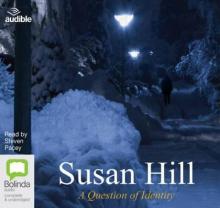 A Question of Identity
A Question of Identity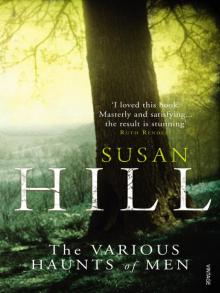 The Various Haunts of Men
The Various Haunts of Men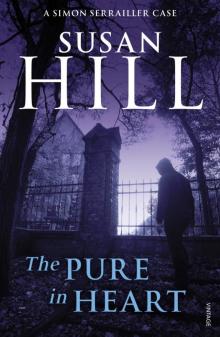 The Pure in Heart
The Pure in Heart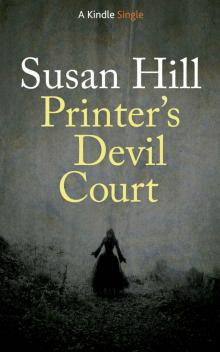 Printer's Devil Court
Printer's Devil Court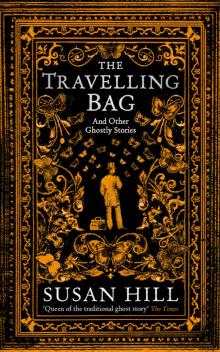 The Travelling Bag
The Travelling Bag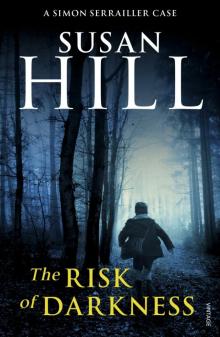 The Risk of Darkness
The Risk of Darkness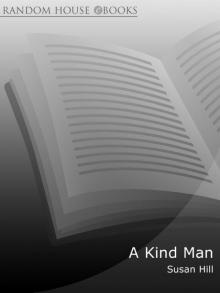 A Kind Man
A Kind Man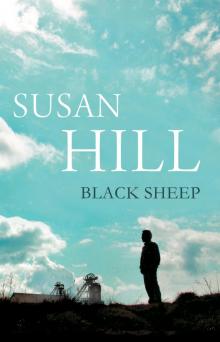 Black Sheep
Black Sheep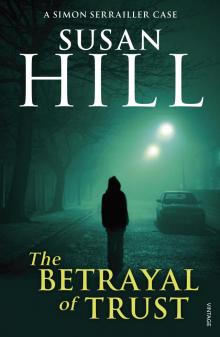 The Betrayal of Trust
The Betrayal of Trust The Service of Clouds
The Service of Clouds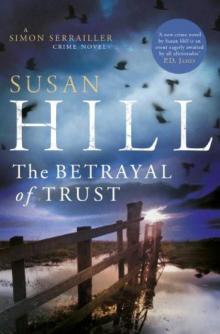 Betrayal of Trust
Betrayal of Trust The Small Hand
The Small Hand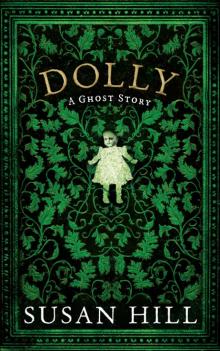 Dolly
Dolly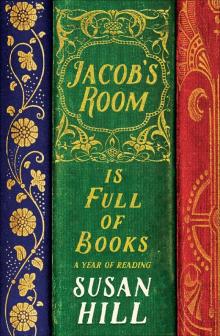 Jacob's Room Is Full of Books: A Year of Reading
Jacob's Room Is Full of Books: A Year of Reading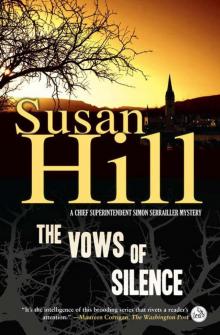 The Vows of Silence
The Vows of Silence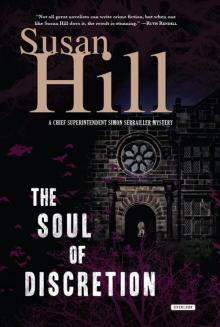 The Soul of Discretion
The Soul of Discretion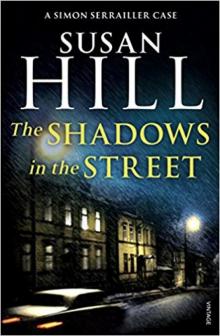 The Shadows in the Street
The Shadows in the Street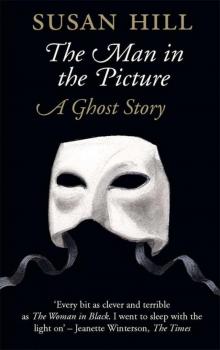 The Man in the Picture
The Man in the Picture Air and Angels
Air and Angels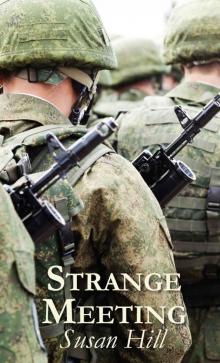 Strange Meeting
Strange Meeting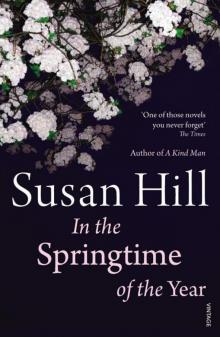 In the Springtime of the Year
In the Springtime of the Year Howards End Is on the Landing: A Year of Reading From Home
Howards End Is on the Landing: A Year of Reading From Home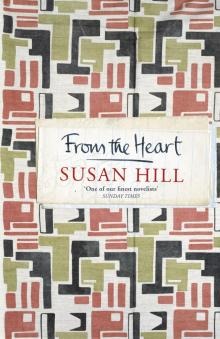 From the Heart
From the Heart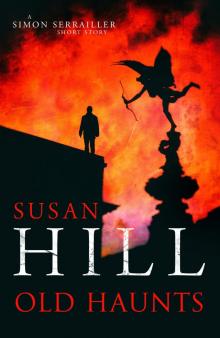 Old Haunts
Old Haunts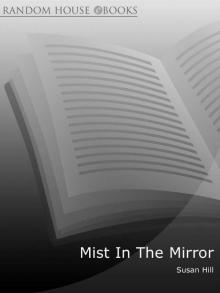 The Mist in the Mirror
The Mist in the Mirror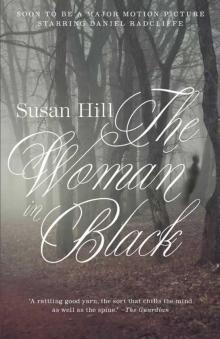 The Woman in Black: A Ghost Story
The Woman in Black: A Ghost Story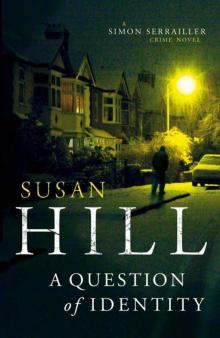 A Question of Identity (Simon Serrailler 7)
A Question of Identity (Simon Serrailler 7)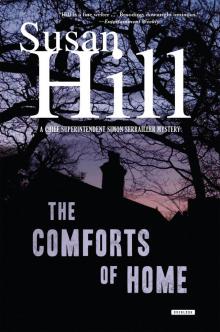 The Comforts of Home
The Comforts of Home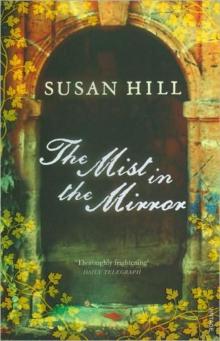 Mist in the Mirror
Mist in the Mirror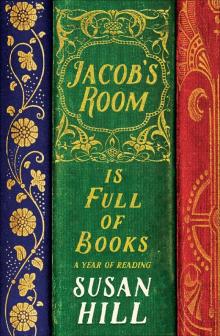 Jacob's Room is Full of Books
Jacob's Room is Full of Books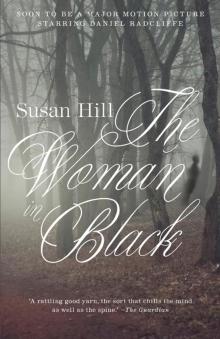 The Woman in Black
The Woman in Black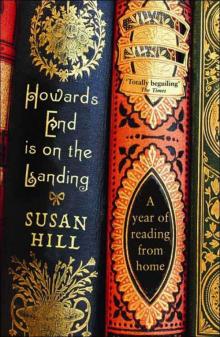 Howards End is on the Landing
Howards End is on the Landing